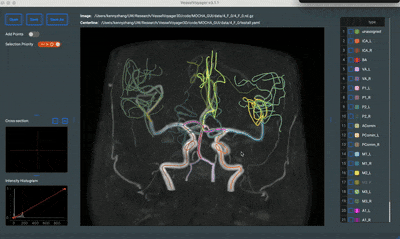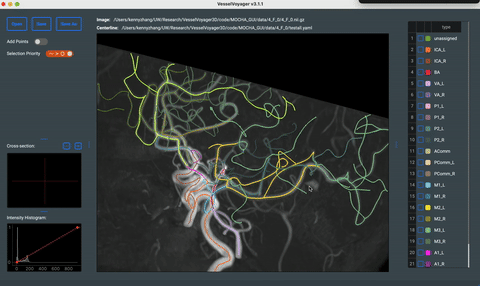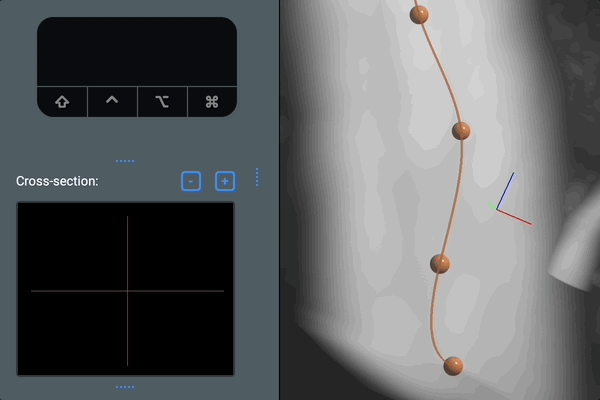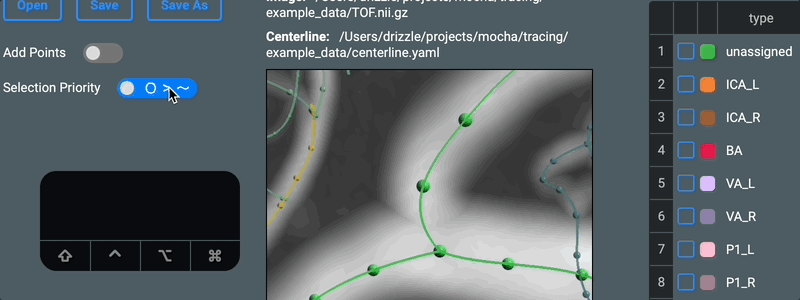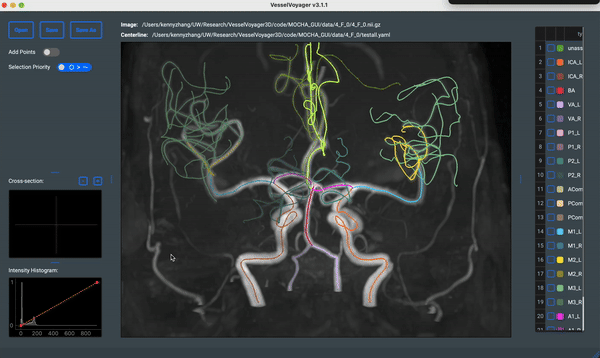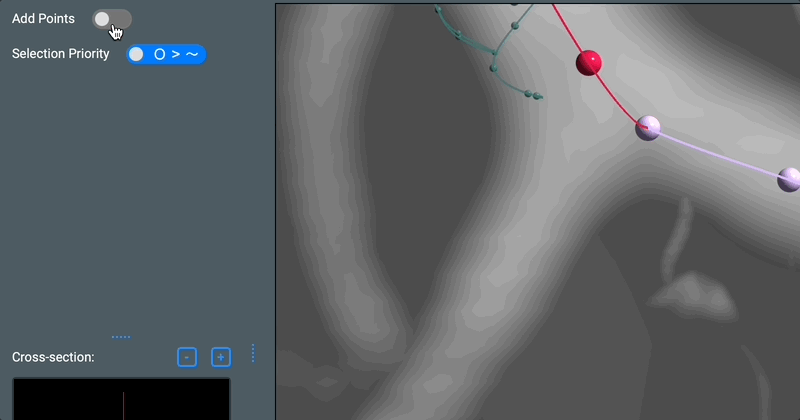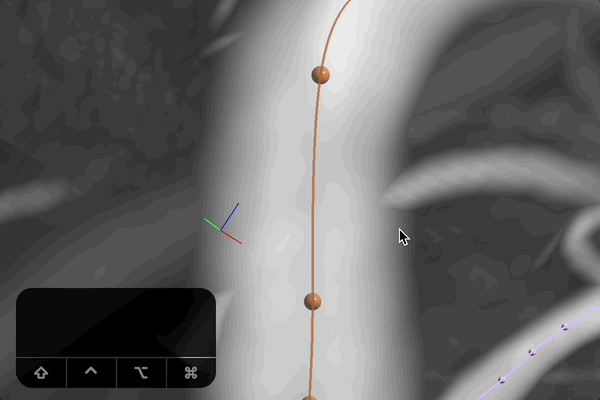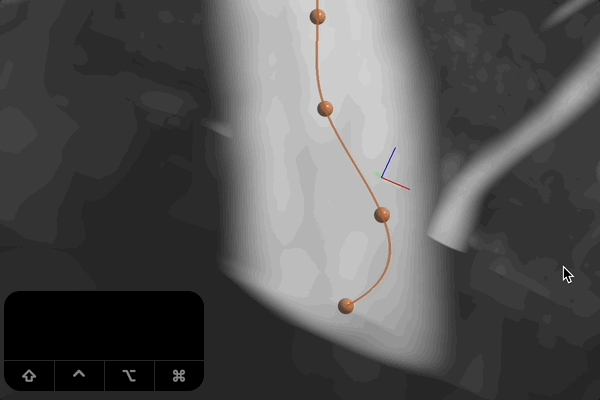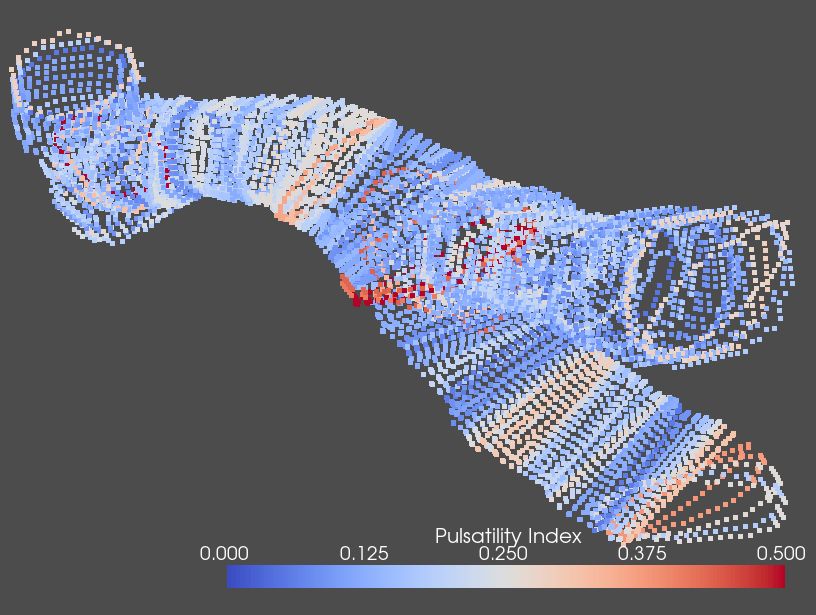VesselVoyager: An Interactive 3D Intracranial Vessel Tracing Software
Pioneered the first 3D interactive annotation software for neuroradiologists
Piloted an advanced HCI (Human-Computer Interaction) system with a gamified interface in the clinical setting
Enhanced clinical efficiency with features like automatic centerline detection
Tripled processing efficiency compared to conventional 2D methodologies
Facilitated the annotation of over 500+ cases post-development
Introduced novel capabilities for analyzing complex vascular structures
BAVA HomePage
BAVA: Brain Artery Network Visualization & Analysis Platform
BAVA (Brain Artery Visualization & Analysis Tool) is a free, open-source online platform designed to revolutionize neurovascular research. This cutting-edge tool empowers researchers to explore, analyze, and contribute to the growing field of brain artery network studies.
3D Visualization: Interactive 3D rendering of brain artery graphs with capabilities such as zoom, rotate, and pan to explore intricate vascular structures.
Data Filtering: Advanced filtering options to refine datasets based on demographic, clinical, and morphological criteria.
Statistical Analysis: Built-in tools for conducting basic statistical analysis, providing insights into the dataset through visual representations.
Data Exploration: LLM empowered models to help users explore and draw conclusions based on historical data.
BAVA's Visualization & Filter Function
BAVA's Feature Selection
BAVA's Data Analysis Using LLM
Estimating Flow Direction of Circle of Willis Using Dynamic Arterial Spin Labeling Magnetic Resonance Angiography - AJNR 2024 May
This study presents an innovative end-to-end machine learning pipeline for analyzing blood flow direction in the Circle of Willis (CoW) using Dynamic Arterial Spin Labeling Magnetic Resonance Angiography (ASL dMRA).
Key achievements:
Developed an end-to-end ML pipeline that processes 4D time-series ASL dMRA data to predict blood flow direction in the CoW.
Built a computational model incorporating graph theory, bootstrap strategy, and ensemble learning to analyze complex 4D vascular structures and time-series data.
Achieved high performance, with 92.8% accuracy in predicting flow direction compared to 3D Phase Contrast MRI as a reference.
Successfully automated the analysis of high-dimensional medical imaging data, reducing the need for manual intervention.
4D Computational Modeling of Basilar Artery for Aneurysm Study - In Vivo Deformation of the Human Basilar Artery - Ann Biomed Eng 2024 Sep
First to quantify in vivo neurovascular wall strains of the human basilar artery over the cardiac cycle.
Demonstrated 4D computational model construction from 4D biomedical data, enabling detailed local deformation analysis for patient-specific aneurysm risk assessment.
Alterations in cerebral distal vascular features and effect on cognition in a high cardiovascular risk population: A prospective longitudinal study - MRI 2023
Applied multivariate analysis to complex time-series biomedical data, integrating unstructured imaging and structured clinical data.
Discovered significant links between cerebral vascular feature changes and cognitive function alterations.
Advanced neuroscience by identifying artery features as potentially more sensitive indicators of cognitive changes than traditional measures.

